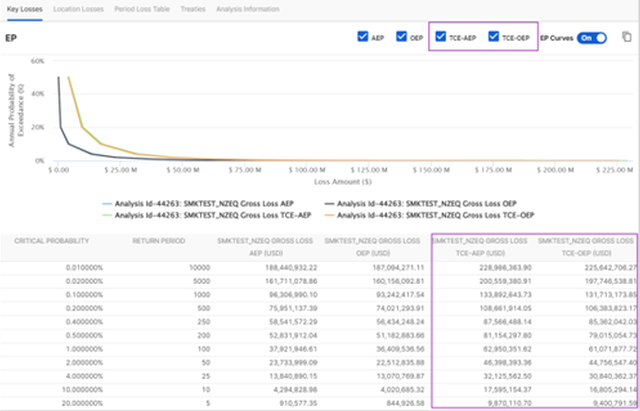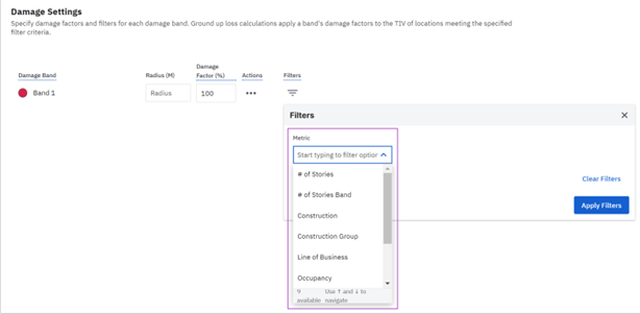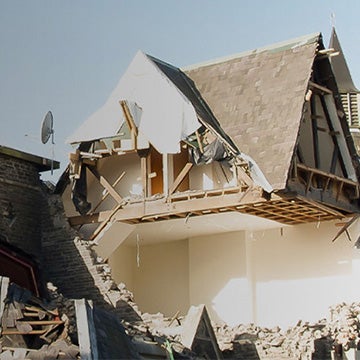Over the past few weeks, we have introduced several model updates and workflow enhancements to Moody’s RMS Intelligent Risk Platform™ (IRP), as we continue to advance the IRP, the open, modular, and cloud-native digital foundation for Moody’s RMS models, data, applications, and unified risk analytics.
The flexibility provided by the platform allows us to continually introduce and roll out innovative new products to platform users.
Recent model updates have simultaneously been made available on Risk Modeler™ and UnderwriteIQ™ applications for Moody’s RMS range of Inland Flood HD Models, Japan Typhoon and Flood HD Model, and the New Zealand Earthquake HD Model.
In addition, new workflow enhancements have been made to other applications on the IRP, including Data Bridge and ExposureIQ™.
Risk Modeler and UnderwriteIQ
1. Europe Inland Flood HD Models Update
Supporting our ongoing commitment to bring the latest technology and methodology improvements plus the latest insights from recent events as soon as possible to our clients, we have released Version 2.1 of the Europe Inland Flood HD Models on both the Risk Modeler and UnderwriteIQ applications.
This update includes:
- Improvements to the HD modeling methodology for low-resolution exposures
- Updated post-event loss amplification (PLA) factors, mainly based on learnings from recent flood events, both in Europe and elsewhere
- Addition of builder's risk into the models
- Expansions to the reference data
- More granular selection criteria for setting up model profiles for scenario and footprint analyses
- Introduction of Version 2.1 of the HD Aggregate Loss Model (ALM™)
ALM profiles are included in the Version 2.1 Europe Inland Flood HD Models, based on updated core models and the 2023 Moody's RMS Europe Inland Flood Industry Exposure Database (IED).
This new IED together with accompanying Moody's RMS Europe Inland Flood Industry Loss Curves (ILCs) will be introduced later this year.
2. Japan Typhoon and Flood HD Model Update
Version 2.1 of the Japan Typhoon and Flood HD Model is available in the latest Version 2.0 Moody's RMS Risk Modeler release.
This version includes:
- Reconstructions of 2019 typhoons with the footprint analysis type supported for the v2.1 HD model within the HD model profile
- Improvements to the HD modeling methodology for low-resolution exposures
- Application of low-resolution exposure modeling to postal codes
An associated Version 2.1 of the HD Aggregate Loss Model (ALM) will also be available. Additionally, Moody’s RMS is releasing the 2023 Industry Exposure Databases for all Japan HD models (including Moody's RMS Japan Earthquake and Tsunami HD Model), accompanied by new 2023 Industry Loss Curves.
3. New Zealand Earthquake HD Model Version 3 Update
Moody's RMS is committed to providing (re)insurers with the tools to comprehensively understand and manage earthquake risk across New Zealand.
The new Version 3 update of Moody’s RMS New Zealand Earthquake HD Model is based on the latest earthquake modeling approaches and enhances the stochastic event set, hazard, and vulnerability components.
The Version 3 update includes:
- The latest science incorporated in the 2022 National Seismic Hazard Map for New Zealand
- A new suite of Ground Motion Prediction Equations (GMPEs) and site amplification models, as well as targeted updates to the source model
- Selected changes to the geotechnical and vulnerability models
- Version 3 of the HD Aggregate Loss Model (ALM)
4. Improved Tail Risk Insights
In the most recent Risk Modeler and UnderwriteIQ release, options have been added to provide additional layers of analysis for Tail Conditional Expectation (TCE) to Occurrence Exceedance Probability (OEP), and Aggregate Exceedance Probability (AEP) losses.
This allows users to understand the shape of the EP curve and the tail of the curve for HD model losses.
All HD models and simulated Event Loss Table (ELT) to Period Loss Table (PLT) loss tables will support TCE-AEP and TCE-OEP at the same output granularity supported by the current AEP and OEP output (see screenshot below).

5. Better Data Management for Open Exposure Data Formats
Clients that store exposure data in the Catastrophe Exposure Database Exchange (CEDE) data format (Version 10.0) can now import and convert this data into an Exposure Data Module (EDM) with Risk Modeler.
Using the same workflow used for uploading a Results Data Module (RDM) or EDM, clients can now seamlessly transform this data without needing to invest the time and resources in developing, testing, and maintaining these complex schema mapping tools, and managing multiple versions of EDM or CEDE data.
Moreover, once this data is uploaded to Risk Modeler or UnderwriteIQ, users can access this data from our ecosystem of collaborative applications hosted on the Intelligent Risk Platform.
ExposureIQ
1. New Damage Factor Filters
When running a circle spider accumulation in the ExposureIQ application, users can now define damage factors based on the line of business for the impacted location. ExposureIQ users can also define filters based on the following data criteria such as:
- Number of stories
- Banded number of stories
- Construction type
- Construction Group
- Occupancy type
- Occupancy Group
- Build year
- Banded build year

2. Enhanced Damage Factor Settings
We have also made it easier for ExposureIQ users (see screenshot above) to apply damage factors and filters to circle spider accumulations. Users can now specify multiple damage factor/filter combinations per damage band. Circle spider accumulations can support up to three damage bands of varying radii with a recommended maximum radius of 30,000 meters.
Data Bridge
1. Improved Management of Classless Inter-Domain Routing Blocks
Administrators manage their Data Bridge Microsoft SQL Server access by using an Access Control List that identifies the IP addresses that are permitted to connect to the server. Any public-facing IP addresses used by corporate, or home offices of a tenant’s Data Bridge users must be in this access control list.
In this latest Data Bridge update, administrators can create up to 150 unique identifiers for networks and devices as Classless Inter-Domain Routing (CIDR) blocks in the Access Control List. This can help personnel access Data Bridge Microsoft SQL Server from locations outside of the office network.
As always, we will continue to keep you updated on the latest unified modeling and Intelligent Risk Platform developments in our regular blog posts.








